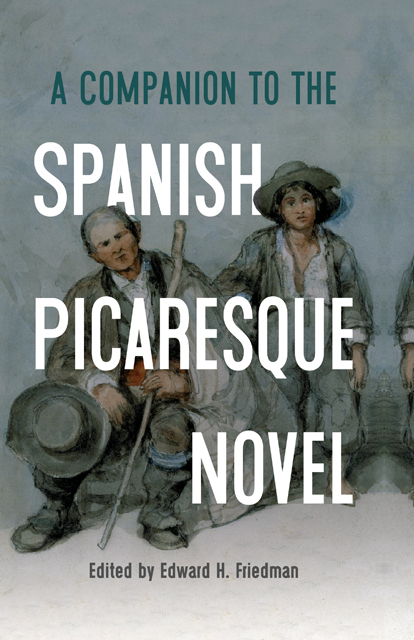Book contents
- Frontmatter
- Contents
- List of Illustrations
- List of Contributors
- Foreword
- 1 The Picaresque as a Genre
- 2 On the Picaresque and Its Origins
- 3 Francisco Delicado, La lozana andaluza
- 4 Lazarillo de Tormes
- 5 Mateo Alemán, Guzmán de Alfarache
- 6 Francisco de Quevedo, La vida del Buscón
- 7 La pícara Justina
- 8 Alonso Jerónimo de Salas Barbadillo, La hija de Celestina
- 9 Miguel de Cervantes and the Picaresque
- 10 Vicente Espinel, Marcos de Obregón
- 11 Carlos García, La desordenada codicia de los bienes agenos
- 12 Estebanillo González
- 13 Critical Approaches to the Picaresque
- 14 The Picaresque in Spanish America
- 15 Continuations: France and England
- 16 The Continuity of the Picaresque: Spain
- Bibliography
- Index
- Tamesis • Companions
14 - The Picaresque in Spanish America
Published online by Cambridge University Press: 11 January 2023
- Frontmatter
- Contents
- List of Illustrations
- List of Contributors
- Foreword
- 1 The Picaresque as a Genre
- 2 On the Picaresque and Its Origins
- 3 Francisco Delicado, La lozana andaluza
- 4 Lazarillo de Tormes
- 5 Mateo Alemán, Guzmán de Alfarache
- 6 Francisco de Quevedo, La vida del Buscón
- 7 La pícara Justina
- 8 Alonso Jerónimo de Salas Barbadillo, La hija de Celestina
- 9 Miguel de Cervantes and the Picaresque
- 10 Vicente Espinel, Marcos de Obregón
- 11 Carlos García, La desordenada codicia de los bienes agenos
- 12 Estebanillo González
- 13 Critical Approaches to the Picaresque
- 14 The Picaresque in Spanish America
- 15 Continuations: France and England
- 16 The Continuity of the Picaresque: Spain
- Bibliography
- Index
- Tamesis • Companions
Summary
Introduction
In his now classic essay “Toward a Definition of the Picaresque,” Claudio Guillen offers eight features that can help to identify which novels belong to the picaresque genre. Although we are not dealing exclusively with novels in this chapter, these features can be useful in assessing how the appeal of the Spanish picaresque novel of the sixteenth and seventeenth centuries is manifest in the writing projects of Spaniards and criollos during the colonial times in Spanish America. By Spanish picaresque novels, I refer to the group of novels with the characteristics that we traditionally ascribe to the genre (an episodic, realistic narrative with a picaro as protagonist who tells his/her life and fortunes, and how, after serving different masters, he/she arrives at the present situation in which he/she writes retrospectively). The genre starts with La vida de Lazarillo de Tormes y de sus fortunas y adversidades (The Life of Lazarillo de Tormes and His Fortunes and Adversities, Burgos, Alcala de Henares, Medina del Campo, and Antwerp, 1554) and ends with La vida y hechos de Estebanillo Gonzalez, hombre de buen humor, compuesta por el mismo (The Life and Deeds of Estebanillo Gonzalez, Man of Good Humor, Written by Himself, Antwerp, 1646).
Together with Lazarillo de Tormes, two other novels achieved great success: Mateo Aleman’s Guzman de Alfarache, published in two parts (1599 and 1604), and Francisco de Quevedo’s Buscon (published in 1626, but written around 1605). Other novels were also successful and influential, but these two (especially Guzman de Alfarache) led to many imitations and sequels, as well as translations into other European languages. In this chapter, however, we remain within the realm of the Spanish language. The novels so far mentioned have left an identifiable trace in most of the Spanish American books we are going to discuss because, after all, regardless of their status as fiction or nonfiction, these books deal with lives and the telling of life experiences. The Spanish picaresque offered an appealing model as well as a narrative device able to capture the testimony of a person who moves horizontally and vertically through both places and social ranks.
- Type
- Chapter
- Information
- A Companion to the Spanish Picaresque Novel , pp. 156 - 169Publisher: Boydell & BrewerPrint publication year: 2022



